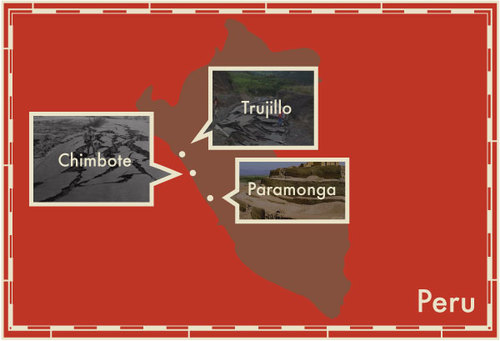Peru's Worst Natural Disaster Only Needed 45 Seconds To Kill 100,000 People
 An earthquake creates various types of waves with different velocities, two of which are the P-wave and the S-wave that are detected with a seismograph. We can obtain the distance from the epicenter of the earthquake (in km), by multiplying the difference of arrival times (in seconds) by 8.
An earthquake creates various types of waves with different velocities, two of which are the P-wave and the S-wave that are detected with a seismograph. We can obtain the distance from the epicenter of the earthquake (in km), by multiplying the difference of arrival times (in seconds) by 8.
Trujillo, Chimbote and Paramonga are three (almost) collinear cities in the coast of Peru. The distance from Trujillo to Chimbote is 120 km, and the distance from Chimbote to Paramonga is 200 km. There was a Great Peruvian Earthquake in May 31, 1970. A seismograph in Trujillo detected the arrival of the first P-wave at 15:23:36 and the arrival of the first S-wave at 15:23:55. A seismograph in Paramonga detects that the arrival times were 15:23:42 and 15:24:04 respectively.
In Chimbote, if a local group of geologists had access to a helicopter that could fly at 180 kilometers per hour, how long would it have taken them to reach the epicenter to begin examining the fault for data?
This section requires Javascript.
You are seeing this because something didn't load right. We suggest you, (a) try
refreshing the page, (b) enabling javascript if it is disabled on your browser and,
finally, (c)
loading the
non-javascript version of this page
. We're sorry about the hassle.
0 solutions
No explanations have been posted yet. Check back later!